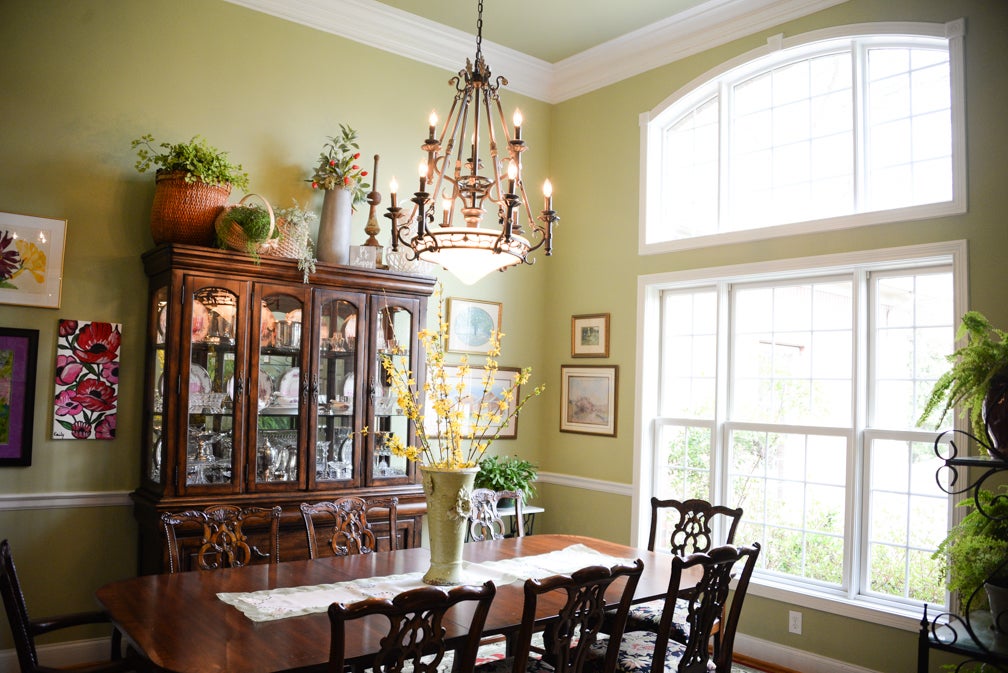By Jocelyne Waddle, The Garden Club of Frankfort
In the heart of Frankfort, where palisades stand as fierce sentinels over our mighty river, winter’s breath frosts gardens and fields, slowing time and allowing nature to rest. Icy fog, as soft as dandelion’s pappi, clings to ancient trees and dawn’s stillness carries whispers of Christmas past.
The time has come to usher in the Yuletide season as we weave a quilt of traditions unique to Kentucky. The scent of burnt wood mingles with the crisp winter air, and tales of love, hope and renewal come alive amidst the flickering candles and the crackle of the hearth fire.

Like sacred jewels, we gather the verdant beauty of nature’s bounty to adorn our home, each vegetation steeped in symbolism and tradition.
Fruit-laden wreaths greet guests in a display of abundance, prosperity and the thankfulness of a bountiful harvest. Dried oranges, apples and cranberries, nestled in magnolia leaves (magnolia grandiflora) and meticulously arranged in a circular wreath, remind us of eternity and the neverending love of God.
We reserve the place of honor for the fragrant cedar tree (juniperus virginiana): Adorned with twinkling lights and heirloom ornaments, it transforms living rooms into magical realms. Unlike the fir or pine often seen in other parts of the country, this is native to Kentucky and symbolizes comfort and stability with its durable wood.
Over our doorways, the mistletoe (phoradendron serotinum) is hung with care. This ancient plant is more than just a parasitic shrub found on hardwood trees. It represents devotion and friendship, adding a touch of romance and whimsy to our festivities. For centuries, each kiss granted under it promises a year filled with love and goodwill.
With its evergreen leaves and bright red fruits, holly (ilex) is a guardian of life, a protector against the darkness, and a symbol of hope and protection. Its presence in wreaths and garlands speaks of renewal, and the berries, reminiscent of the blood of Christ, add a deeper spiritual meaning to our Christmas celebrations.

The ivy (hedera) represents fidelity, friendship and eternal life with its tenacious climb and grace. It winds into festive decorations, a living reminder of the enduring bonds of love and community.
The branches of pine (pinus strobus) and spruce (picea pungens) are also used to embellish our abodes. These evergreens are crafted into swags and centerpieces, bringing the fresh scent of the forest into our homes. Pinecones, too, remain a popular element to create rustic ornaments.
Several herbs like rosemary (rosmarinus officinalis), thyme (thymus vulgaris), and sage (salvia officinalis) continue to play a role in Kentucky Christmases’ culinary and medicinal traditions to ward off cold weather ailments, reflecting the region’s reliance on natural remedies.
Regardless of their origins, Kentuckians have long woven the wild beauty of their surroundings into their winter celebrations, a tradition as old as the hills themselves. Every decoration is a gift bestowed upon us by the generosity of the land we call home. This deep connection to nature is not simply an odd to the past, but a living heritage passed down from generation to generation.
Jocelyne Waddle is a Garden Club of Frankfort member and a published author of historical mysteries.












